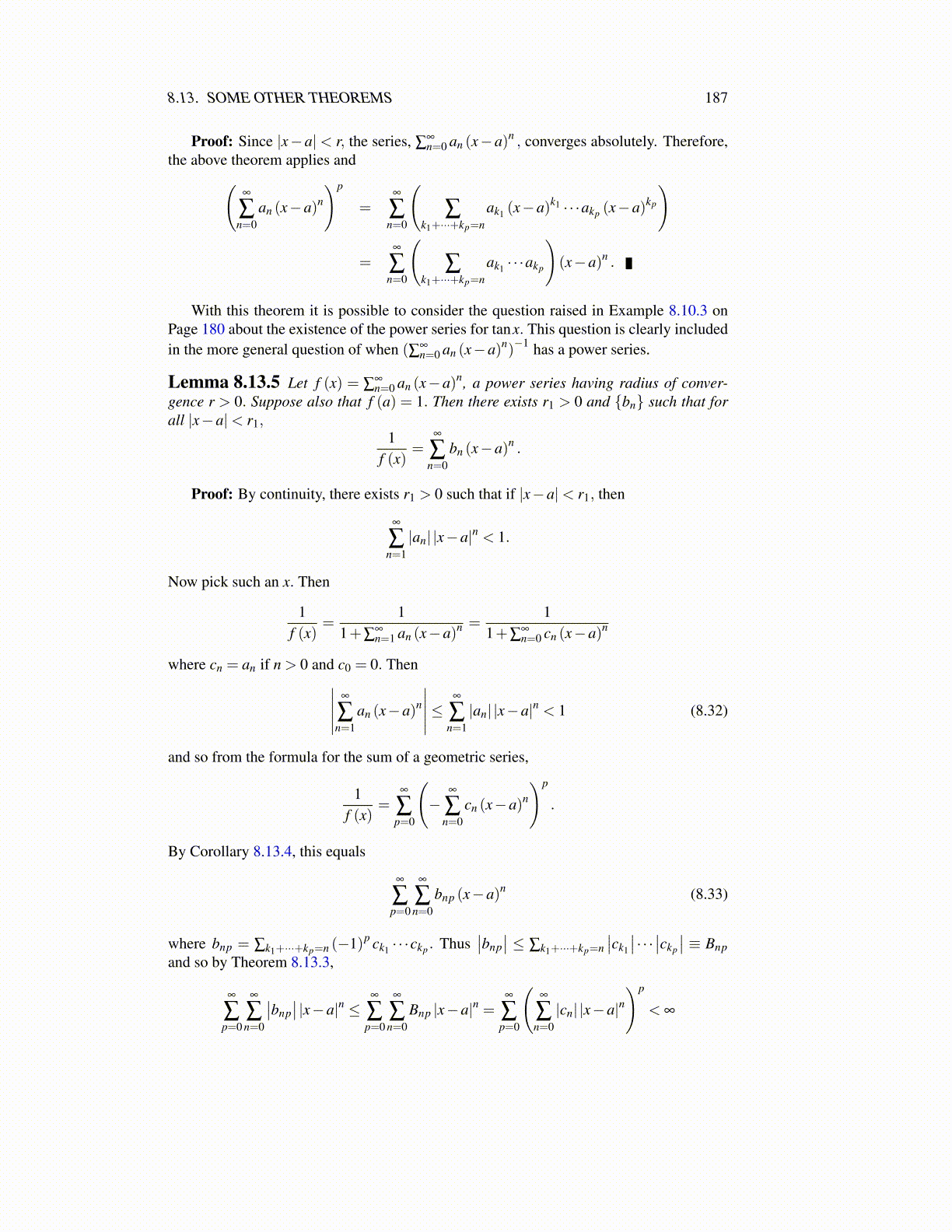
Chapter 9
IntegrationThe integral originated in attempts to find areas of various shapes and the ideas involvedin finding integrals are much older than the ideas related to finding derivatives. In fact,Archimedes1 was finding areas of various curved shapes about 250 B.C. using the mainideas of the integral. Newton and Leibniz first observed the relation between the integraland the derivative. However, their observations were incomplete because they did not havea precise definition for the integral. This came much later in the early 1800’s and the firstsuch definition sufficient to include continuous functions was due to Cauchy around 1820who gave the first complete proof of the fundamental theorem of Calculus. Not much later,Dirichlet proved convergence of Fourier series to the mid-point of the jump of a piecewisecontinuous function under suitable conditions. However, a general theory for the integralwhich would include piecewise continuous functions did not come about till around 1854with the work of Riemann and completed by Darboux. Lebesgue solved the hard questionsabout this integral in the early 1900’s.
Of course people used the fundamental theorem of calculus, which was based on findingantiderivatives, to compute integrals all through the eighteenth century, but the fundamentalquestion whether there exists an antiderivative for continuous functions was not consideredtill the time of Cauchy. However, using the later nineteenth century ideas of the Weierstrassapproximation theorem as developed by Bernstein, we can consider this question. It willbe entirely adequate to deal with all functions typically encountered in elementary calculusand is very short. After this, are sections devoted to the more general Riemann Stieltjesintegrals due to Stieltjes which date from the late nineteenth century, used in number theory,probability, and functional analysis. This includes as a special case the Riemann integral.In this more general theory, one uses an integrator function to include in the notion of anintegral things like sums and a mixture of sums and integrals.
9.1 The Integral of 1700’sRecall the following definition from beginning calculus.
Definition 9.1.1 ∫f (x)dx denotes the set of functions F which have the property
that F ′ (x) = f (x). These are called antiderivatives. When f is continuous on [a,b] , it isalso required that F is continuous on [a,b] in addition to having F ′ (x) = f (x) on (a,b).
From the chapter on the derivative,∫
∑nk=0 akxk = ∑
nk=0 ak
xk+1
k+1 +C where C is an arbi-trary constant. Thus it is easy to find an antiderivative for any polynomial.
The next lemma shows that also every continuous function defined on a closed interval[a,b] has an antiderivative.
Lemma 9.1.2 Let f be a continuous, real valued function defined on [a,b] . Then thereexists F such that F ′ (x) = f (x) for all x ∈ (a,b) . At the end points, F ′ (x) will refer to aone sided derivative.
1Archimedes 287-212 B.C. found areas of curved regions by stuffing them with simple shapes which he knewthe area of and taking a limit. He also made fundamental contributions to physics. The story is told about how hedetermined that a gold smith had cheated the king by giving him a crown which was not solid gold as had beenclaimed. He did this by finding the amount of water displaced by the crown and comparing with the amount ofwater it should have displaced if it had been solid gold.
187